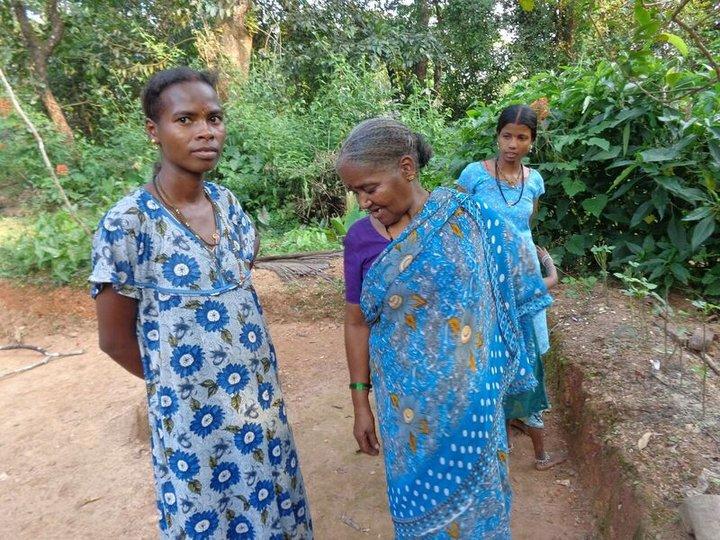Can local participation in community forestry foster social inclusiveness and gender equity?

Community forestry approaches that aim to form a partnership between governments and communities have gained popularity around the world. These approaches promise to enhance sustainable forest management, conservation efforts and local livelihoods.
By Alessandra Grosse, MSc. Environmental Governance graduate and former Gender intern at Bioversity International
Community forestry approaches that aim to form a partnership between governments and communities have gained popularity around the world. These approaches promise to enhance sustainable forest management, conservation efforts and local livelihoods.
In India, which is home to the largest participatory forest management initiative in the world, about 8.4 million forest dependent families are now involved in co-managing 22 million hectares of forested land. Within this Joint Forest Management (JFM) program, more than 100,000 Village Forest Committees (VFCs) are in theory responsible for daily management decisions, drafting a forest management plan and ensuring a fair benefit sharing among communities and the state.
VFCs are made up of a general assembly formed by all villagers, and an executive board of 10-15 elected village representatives and a local Forest Department official. Formal regulations require that one third of the seats of the board be reserved for women and another third for members of Scheduled Castes and Scheduled Tribes—some of India’s most historically disadvantaged groups. Although the Government of India indicates that the JFM program is meant to be “a massive people's movement, with the involvement of women” for the wise governance of forests, achieving effective and inclusive participation of all forest users is difficult. Women, as well as the so-called lower castes and Scheduled Castes and Tribes, are often excluded from actively participating in these decision-making spaces.
Research carried out in the densely-forested state of Karnataka, India, examined gender equity and social inclusion to understand how participation in JFM can be made more inclusive and support equitable forest management. Compared to other states in India, Karnataka is seen as an example for being home to a well-functioning JFM program.
From August to October 2015, interviews were carried out with villagers, members of VFC executive committees, NGO staff and Forest Department officials to understand whether local people believe the JFM program is equitable and the reasons why. Results showed that community members have varying capacities to engage in JFM decision-making processes. In the study site, lower caste and tribal groups rely heavily on forests to sustain their livelihoods, which motivates them to engage in JFM activities and to attend the general assembly. Women are a diverse group: upper caste Brahmin women are less reliant on the forest and more constrained by gender norms that attribute public spaces, such as the general assembly, to men. In contrast, tribal women, such as from the Siddhi community, spend substantial time collecting and processing forest products and are less limited by gender norms than their Brahmin counterparts.
While in many other Indian states JFM remains highly exclusionary, in the study site both women and men from lower-castes and tribal groups indicated that they felt comfortable speaking up within smaller VFC executive boards, although they felt less so speaking up in the larger general assembly. The more familiar environment during board meetings, sensitivity to issues of social inclusion by local leaders and good leadership within the VFCs from Brahmin members apparently facilitated their inclusion. These measures can be replicated to foster greater equity in VFCs in other villages and states.
Although constraints for achieving the full participation of all community members remain, progress in terms of the engagement of women and lower-caste members in JFM decision-making has been made. These women and men who give a voice to those who are traditionally marginalized can set an example for others like them to participate and speak up, too. The establishment of VFCs has helped communities in the study site to share knowledge and opinions and negotiate commonly agreed solutions, while building relationships based on collective experiences, both among themselves and with the local Forest Department. In this way, VFCs can be spaces of interactions among different groups that can break down some culturally-imposed divisions among them. With time, this may foster a process of social transformation.
This research was carried out by Alessandra Grosse, former Masters student in Environmental Governance at Freiburg University, in collaboration with Bioversity International and LIFE Trust Sirsi within the context of the project Innovations in Ecosystem Management and Conservation (IEMaC) led by IORA Ecological Solutions. IEMaC is funded by USAID, the CGIAR Research Program on Forests, Trees and Agroforestry and CGIAR Fund Donors.
Photo: Women from the Siddhi tribe after the interview in one of the study villages. Credit: Bioversity International/A. Grosse
